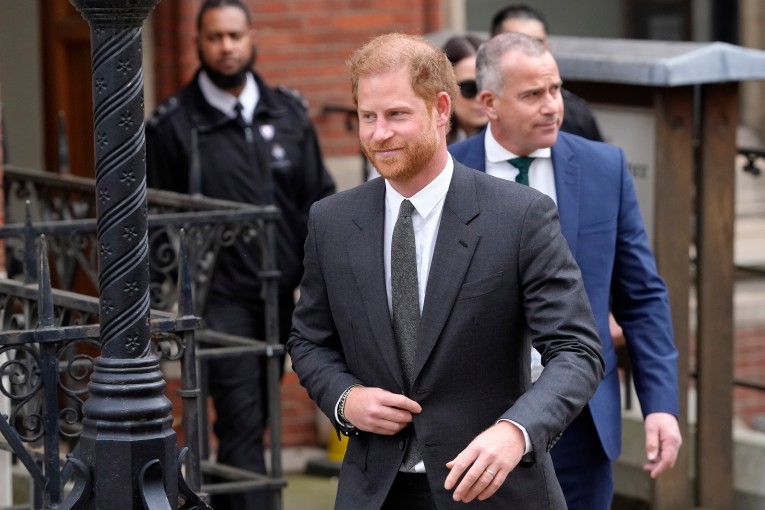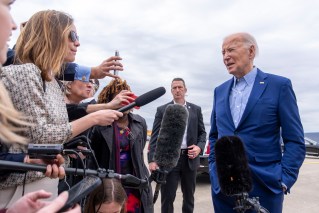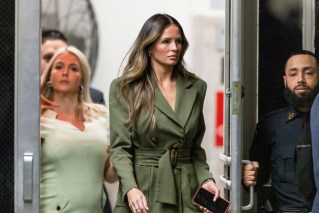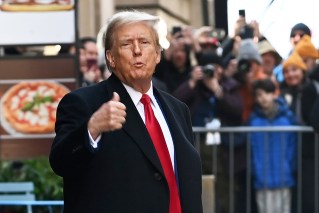Publisher of New York Times and Trump clash
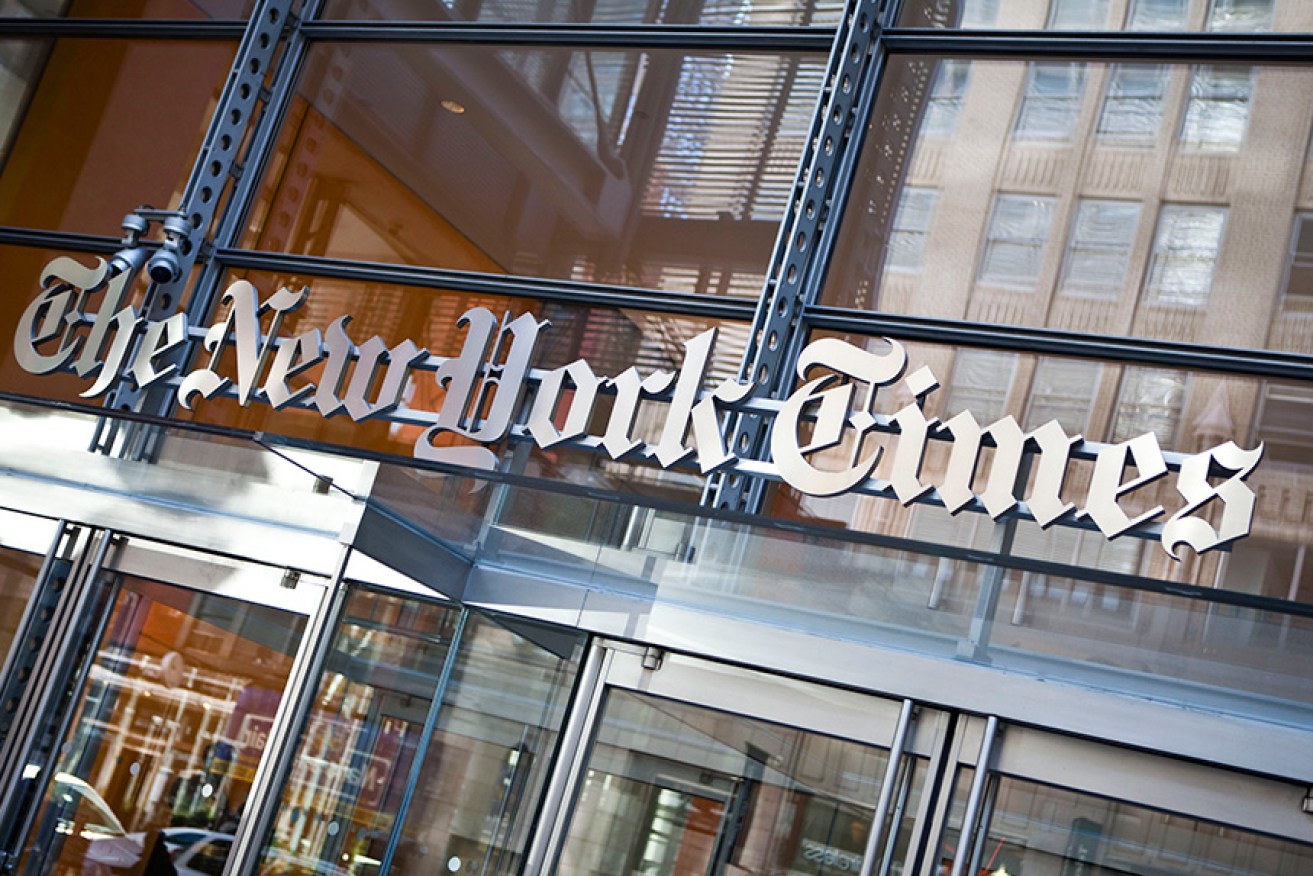
The New York Times is in Donald Trump's sights. Photo: Getty
US President Donald Trump and the publisher of The New York Times, A G Sulzberger, engaged in a fierce public clash on Sunday over Mr Trump’s threats against journalism, after Mr Sulzberger said the President misrepresented a private meeting and Mr Trump accused The Times and other papers of putting lives at risk with irresponsible reporting.
Mr Trump said on Twitter that he and Mr Sulzberger had discussed “the vast amounts of Fake News being put out by the media & how that Fake News has morphed into phrase, ‘Enemy of the People.’ Sad!”.
In a five-paragraph statement issued two hours after the tweet, Mr Sulzberger said he had accepted Mr Trump’s invitation for the July 20 meeting mainly to raise his concerns about the President’s “deeply troubling anti-press rhetoric”.
“I told the President directly that I thought that his language was not just divisive but increasingly dangerous,” said Mr Sulzberger, who became publisher of The Times on January 1.
“I told him that although the phrase ‘fake news’ is untrue and harmful, I am far more concerned about his labelling journalists ‘the enemy of the people’,” Mr. Sulzberger said. “I warned that this inflammatory language is contributing to a rise in threats against journalists and will lead to violence.”
This was particularly true overseas, Mr Sulzberger said, where governments were using Mr Trump’s words as a pretext to crack down on journalists. He said he warned the President that his attacks were “putting lives at risk” and “undermining the democratic ideals of our nation”.
Mr Sulzberger’s lengthy, bluntly worded rebuttal was a striking rejoinder to the President by the 37-year-old publisher of a paper with which Mr Trump has had a long, complicated relationship. And it apparently touched a nerve: The President fired off a series of angry tweets in the afternoon, accusing newspapers of being unpatriotic.
“I will not allow our great country to be sold out by anti-Trump haters in the dying newspaper industry,” he wrote.
…dying newspaper industry. No matter how much they try to distract and cover it up, our country is making great progress under my leadership and I will never stop fighting for the American people! As an example, the failing New York Times…
— Donald J. Trump (@realDonaldTrump) July 29, 2018
“The failing New York Times and the Amazon Washington Post do nothing but write bad stories even on very positive achievements — and they will never change!”
Mr Trump, in his initial tweet from his golf club in Bedminster, New Jersey, on Sunday morning, described the meeting with Mr Sulzberger as “very good and interesting”. But in referring to the phrase “enemy of the people”, he did not make clear that he himself began using that label about the press during his first year in office.
He has continued to assail the news media at rallies and even at more formal presidential events, encouraging his audiences to chant “CNN sucks” and to vent their anger at assembled reporters.
Speaking to veterans in Kansas City last week, Mr Trump said: “Stick with us”.
Don’t believe the crap you see from these people, the fake news.”
As members of the crowd booed and hissed at the press corps, he added, “What you’re seeing and what you’re reading is not what’s happening”.
The President invited Mr Sulzberger to the Oval Office earlier this month, according to The Times, continuing a tradition of meetings between presidents and the paper’s publishers. James Bennet, the editorial page editor of The Times, accompanied Mr Sulzberger to the meeting.
Mr Sulzberger had a different account of his meeting with Mr Trump, which the President revealed after having asked that it be off the record. “I told the President directly that I thought that his language was not just divisive but increasingly dangerous,” Mr Sulzberger said.
In a statement, Mercedes Schlapp, a White House communications adviser, said: “The President regularly meets with members of the media, and we can confirm this meeting took place”. She did not provide any further details of the meeting or explain why Mr Trump chose to publicise it.
The White House had requested the meeting be kept off the record, according to the statement from The Times.

At his rallies, Donald Trump often incites criticism of the media. Photo: Getty
“But with Mr Trump’s tweet this morning,” the statement said, “he has put the meeting on the record, so A G has decided to respond to the President’s characterisation of their conversation, based on detailed notes A G and James took.”
In a telephone interview, Mr Sulzberger described the meeting with Mr Trump, whom he had met only once before, as cordial. But he said he went into the Oval Office determined to make a point about what he views as the dangers of the President’s inflammatory language.
Mr Sulzberger recalled telling Mr Trump at one point that newspapers had begun posting armed guards outside their offices because of a rise in threats against journalists. The President, he said, expressed surprise that they did not already have armed guards.
At another point, Mr Trump expressed pride in popularising the phrase “fake news”, and said other countries had begun banning it.
Mr Sulzberger responded that those countries were dictatorships and that they were not banning “fake news” but rather independent scrutiny of their actions.
Still, Mr Sulzberger said, by the end of the session, he felt that Mr Trump had listened to his arguments. The President, Mr Sulzberger recalled, told him he was glad that he had raised those issues and would think about them.
Mr Sulzberger said he bore no illusions that his comments would prompt Mr Trump to curb his attacks on the news media. He said he encouraged the President to complain about news coverage in The Times that he viewed as unfair. But he appealed to him not to systematically attack journalists and journalism around the world.
–New York Times
